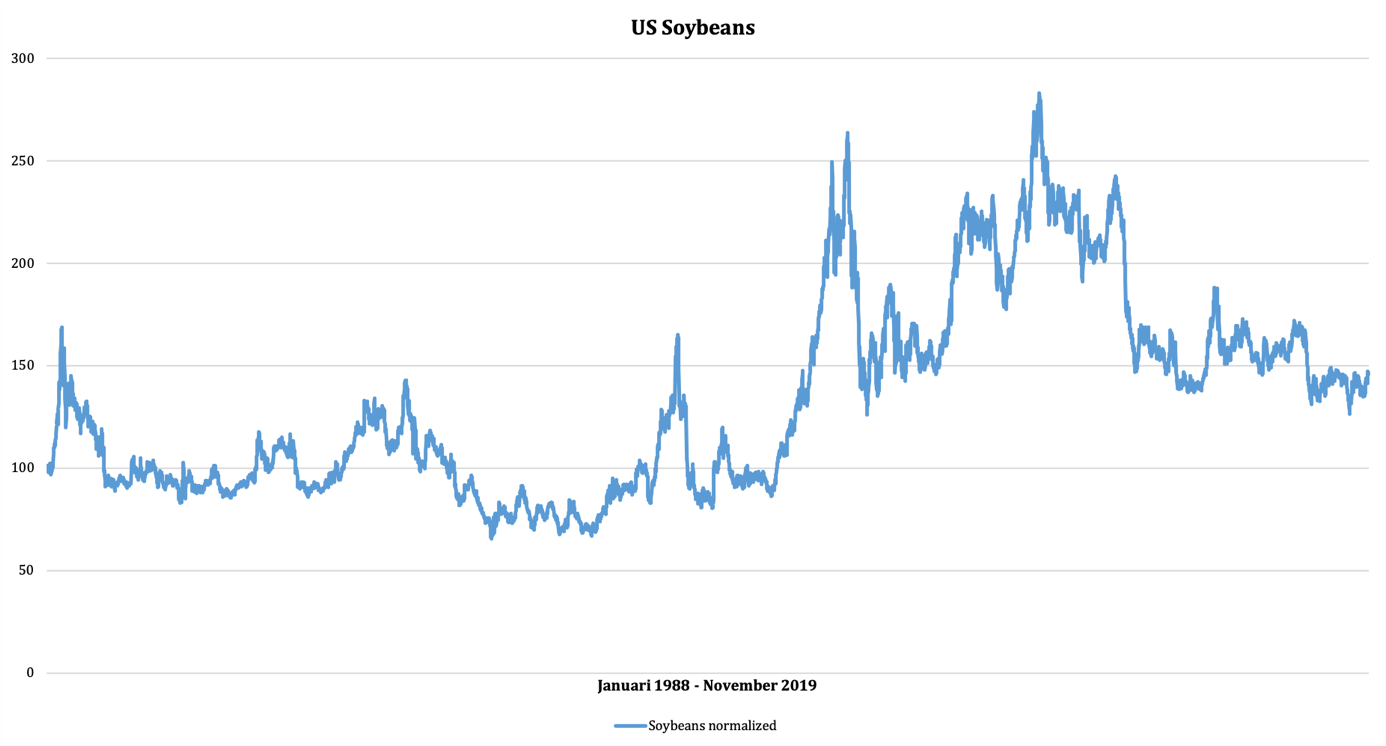Large stocks and lower demand for Soybeans


US Soybeans have been in blustery weather for the past two years because of the US-China trade war. Generally, the price of agricultural commodities is squeezed and US Soybeans are not an exception, however, the question is whether it is now possible to include the raw material in the portfolio, or if it may be worth the wait.
US Soybeans have been in blustery weather for the past two years because of the US-China trade war. Generally, the price of agricultural commodities is squeezed and US Soybeans are not an exception, however, the question is whether it is now possible to include the raw material in the portfolio, or if it may be worth the wait.
Since 2012, the price of US Soybeans has fallen by over 40 percent, and the trade war between China and the US with associated tariffs on the commodity has not directly had any positive effects on the price in the short term.

With
the swine flu and the trade war hand in hand, American farmers have had to cast
their eyes on alternative markets so that stocks do not grow even
more. However, the effort has not led to more than exports to Bangladesh,
Pakistan and India, which in fact is about a tenth as much as China usually
buys. As a result, soybean stocks in the US have almost doubled over the
past year, from 438 million tonnes to just over 1 billion tonnes. For the
initiate, it is understood that this is not particularly good for the price of
soybeans in the short, medium or long term.
For
those who want to speculate in the short term, however, there may be a reason
to look at the effects a partial solution of the trade war in December could
have. But for those looking for value-based investments, both stocks and
demand speak to the price in the longer term than a few months would turn.
Instead, the situation for soybeans comes later, when stocks decline and the pig population grows again, and preferably in combination with the world's two largest economies having stopped raising tariffs on goods traded among themselves. Until then, one can instead follow the development from a distance and wait for better times than today.
@Anna Svahn
This information is in the sole responsibility of the guest author and does not necessarily represent the opinion of Bank Vontobel Europe AG or any other company of the Vontobel Group. The further development of the index or a company as well as its share price depends on a large number of company-, group- and sector-specific as well as economic factors. When forming his investment decision, each investor must take into account the risk of price losses. Please note that investing in these products will not generate ongoing income.
The products are not capital protected, in the worst case a total loss of the invested capital is possible. In the event of insolvency of the issuer and the guarantor, the investor bears the risk of a total loss of his investment. In any case, investors should note that past performance and / or analysts' opinions are no adequate indicator of future performance. The performance of the underlyings depends on a variety of economic, entrepreneurial and political factors that should be taken into account in the formation of a market expectation.